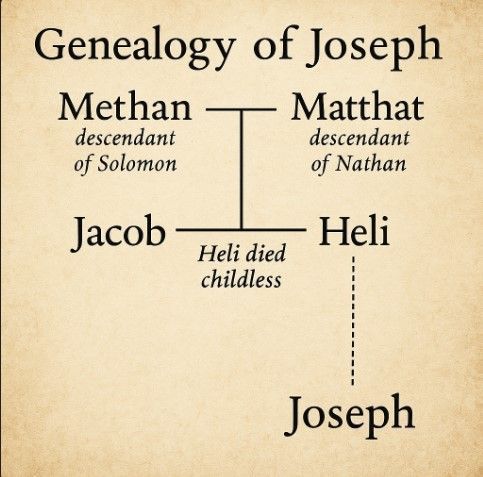One of the most debated issues in the New Testament is the genealogy of Jesus. In Matthew chapter 1, we are given a genealogy that runs from Abraham down to Jesus. In contrast, Luke chapter 3 gives a genealogy that runs in reverse—from Jesus all the way back to Adam.
But the key issue isn't just the order—it’s the differences in the names listed, particularly when it comes to Joseph, the husband of Mary.
The Apparent Contradiction
-
Matthew 1:16 – “And Jacob begot Joseph the husband of Mary, of whom was born Jesus, who is called Christ.”
-
Luke 3:23 – “And Jesus Himself began to be about thirty years of age, being (as was supposed) the son of Joseph, the son of Heli…”
So which is it?
Was Jacob the father of Joseph as Matthew states?
Or was it Heli, as Luke states?
It seems like a clear contradiction—until we dig deeper.
Eusebius’ Historical Explanation
The early 4th-century church historian Eusebius, in his Ecclesiastical History (Book 1, Chapter 7, pages 19–21), records an ancient tradition preserved by Julius Africanus, a Christian scholar from the 3rd century. This tradition explains the apparent discrepancy by referencing the law of levirate marriage found in Deuteronomy 25:5-6:
“If brothers dwell together and one of them dies and has no son, the wife of the dead man shall not be married outside the family to a stranger. Her husband’s brother shall go in to her, take her as his wife, and perform the duty of a husband’s brother to her.”
How It Works in This Case
According to Eusebius’ record of Africanus’ explanation:
-
Jacob and Heli were half-brothers, sharing the same mother but different fathers.
-
Methan, a descendant of Solomon, was Jacob’s father.
-
After Methan died, his widow married Matthat, a descendant of Nathan (Solomon’s brother), and bore Heli.
-
Later, Heli died childless.
-
According to the levirate law, Jacob married Heli’s widow and had a son—Joseph.
-
Biologically, Joseph was the son of Jacob.
-
Legally, Joseph was the son of Heli, his uncle, fulfilling the levirate law.
Therefore:
-
Matthew records the biological lineage through Jacob.
-
Luke records the legal lineage through Heli.
This shows that both genealogies are genealogies of Joseph, not Mary, and both are correct—they just follow different legal and cultural perspectives.
What About the Mary Theory?
Many modern scholars and commentators claim that:
-
Luke’s genealogy traces Mary’s lineage.
-
Matthew’s genealogy traces Joseph’s lineage.
They often suggest that when Luke says “Joseph, the son of Heli,” it really means “son-in-law of Heli,” implying that Heli was Mary’s father.
However, this theory contradicts the record preserved by Eusebius. According to Eusebius, Heli died childless, which means he could not have had a daughter named Mary.
So the idea that Luke is giving Mary’s genealogy is not supported by the earliest church historians.
Conclusion
The genealogies in Matthew and Luke do not contradict—they complement each other when understood in their historical and legal context. Joseph, the husband of Mary, was:
-
The biological son of Jacob (Matthew)
-
The legal son of Heli (Luke)
This is made possible by the levirate marriage law in Deuteronomy 25, and the detailed explanation is preserved in Eusebius’ Ecclesiastical History, based on a letter by Julius Africanus.
📚 You can find this explanation in Eusebius’ Ecclesiastical History, Book 1, Chapter 7, Pages 19–21. It’s available online or in print for under $20.
Both gospel accounts tell the truth—just from different legal and biological viewpoints. There is no contradiction—only a deeper story rooted in Jewish tradition and preserved by early Christian historians.
